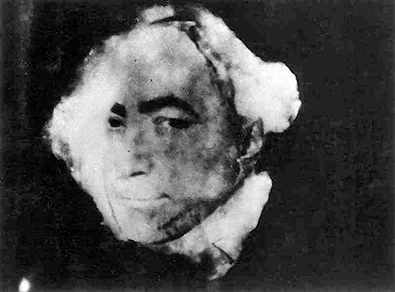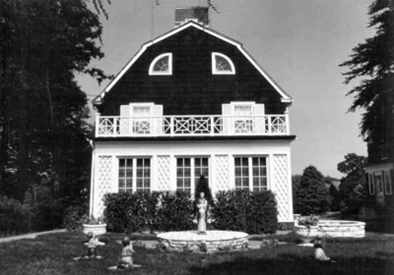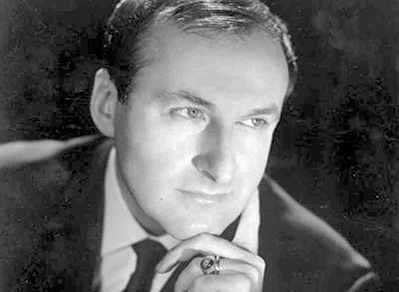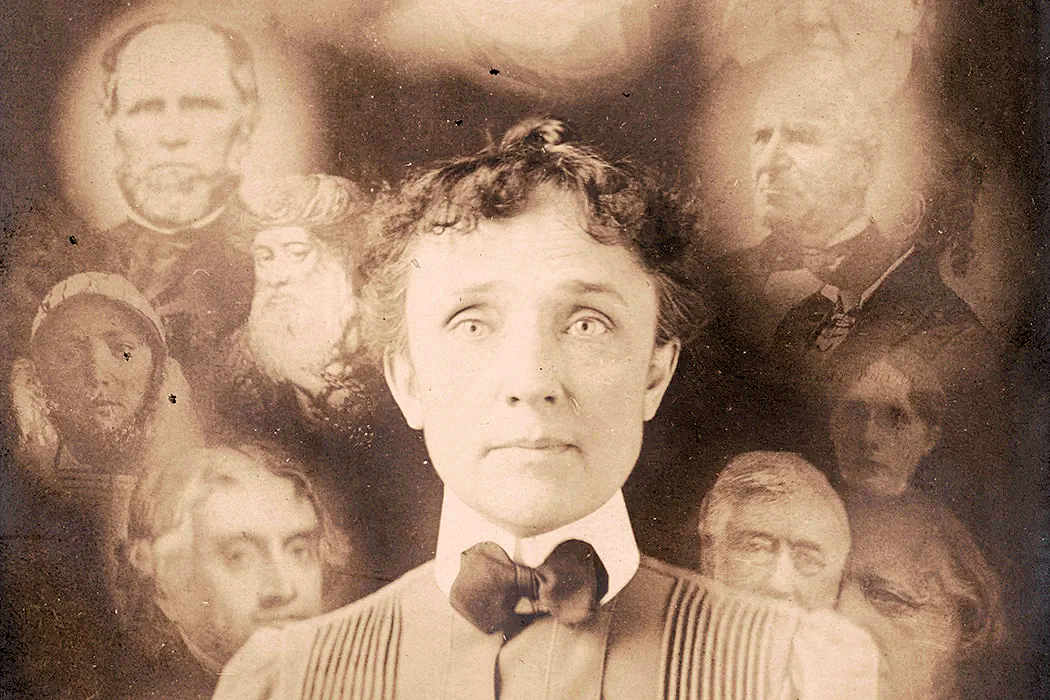Although ghost stories have existed throughout time and across many cultures, the beginning of the serious study of ghosts started in 1840 with the creation of spiritualism. Spiritualism is a religious movement based on the belief that the spirits of the dead exist and have both the inclination and the ability to communicate with the living. The afterlife, or the “spirit world,” is seen by spiritualists as one in which spirits continue to evolve. These two beliefs, that contact with spirits is possible, and that spirits are more advanced than humans, lead spiritualists to also believe that ghosts are capable of providing some sort of knowledge about moral issues and even the nature of God. It flourished for a half-century without canonical texts or any formal organization. Instead, it achieved unity through various published periodicals, camp meetings and through tours that were performed by trance lecturers. By the late 1880s, the credibility of the informal movement had weakened due to accusations of fraud that was perpetrated by the mediums. As a result, formal Spiritualist organizations began to appear.

The claims of spiritualists and others regarding the actual existence of ghosts were investigated by the Society for Psychical Research (SPR) which was founded in London in 1882. The society also set up a committee on haunted houses. However much of the early work involved investigating, exposing and even duplicating fake phenomena in several cases in the late 19th century. SPR’s investigations into séance phenomena would eventually lead to the exposure of many fraudulent mediums. One such example occurred in 1884 when SPR investigator Richard Hodgson was sent to India to investigate a medium named Helena Blavatsky. He concluded that her claims of psychic powers were fraudulent and were performed through deception.
In 1886 and 1887 a series of publications were published by S. J. Davey, Hodgson and Henry Sidgwick in the SPR journal that exposed the slate writing tricks of the medium William Eglinton. Hodgson and Davey had also conducted fake séances to educate the public on the techniques and tricks used by mediums. Davey gave sittings under an assumed name, while the phenomena were duplicated by Eglinton. They then proceeded to point out to the sitters how they had been deceived. Because of this, some spiritualist members such as Stainton Moses resigned from the SPR.
The final straw came In 1891 when Alfred Russel Wallace requested for the Society to investigate spirit photography properly. Eleanor Sidgwick, Henry’s wife, wrote a critical paper that cast serious doubt on the validity of the subject and discussed the fraudulent methods that spirit photographers were using to produce their “spirit” images. Due to the exposure of the fraudulent mediums and spirit photography, Arthur Conan Doyle led a mass resignation of eighty-four members of the Society for Psychical Research, as they believed the Society was opposed to spiritualism.
Science historian William Brock has noted that;
“By the 1900s most avowed spiritualists had left the SPR and gone back to the BNAS (the London Spiritualist Alliance), having become upset by the skeptical tone of most of the SPR’s investigations.”
While spiritualism has affected the perception about what ghosts are, the public has also been biased by the popularity of ghost stories in fiction. Fictional ghost stories are predominately based on superstition and folklore, not observed phenomenon that parapsychologists and others have researched and documented. An excellent example of this is the concept of looking for ghosts during the evening when it is dark or investigating a location with the lights off. The belief that ghosts are only active when it is dark is actually based on folklore.
Hollywood soon found the entertainment value of ghost stories as well and began producing horror movies which featured ghosts and various other paranormal phenomena. In the early years these were often quite comedic and featured famous comedians of the day such as Laurel and Hardy and the Three Stooges, but by the late 1960’s the themes became dark, often involving demonic possession and evil entities.
The misinformation dramatically increased as “true life ghost stories” began appearing in books and other media venues. Some of these “real-life” cases may have been initially devised as nothing more than a good ghost story, but then they were presented as authentic in the hope of enhancing their commercial potential. This resulted in a variety of television programs that featured such locations. “Sightings,” “Unexplained Mysteries” and “In search of….” have become some of the more popular programs that showcased these locations and events. However, the best example of this is the Amityville Horror, a book by author Jay Anson that was published in September 1977. By 1979 it had become the basis of a major Hollywood film that was based on the supposed paranormal experiences of the Lutz family while living in a “real” haunted house in Amityville, New York.
The house itself was the scene of real horror. On November 13, 1974, Ronald DeFeo Jr. shot and killed his parents and four siblings. Later, George and Kathy Lutz and William Weber, DeFeo’s defense attorney, created the “real life” haunt which in turn spawned more scams and lawsuits. According to Lloyd Auerbach’s book titled “ESP, Hauntings, and Poltergeists,” after the Lutzes fled from the house, the American Society for Psychical Research and the Psychical Research Foundation investigated the home. Ultimately, they found that the stories were not real and had been fabricated. One of the significant clues came from seeing a sample of Ronald DeFeo Jr’s handwriting on a contract for profits from a book and a film. Additionally, William Weber, the defense attorney for Ronald DeFeo, Jr., admitted in a radio interview, and to the press, that the Amityville haunting was a hoax that was concocted to make money. The Catholic Diocese of Rockville Center and the Amityville Police Department also debunked the scam. Even the Lutzes repudiated some parts of their story.

Father Ralph Pecararo, “Mancuso,” in the book, sued Prentice-Hall and the Lutzes for exaggerating his involvement in the “haunting” and for the invasion of privacy. The case was eventually settling out of court. Parapsychologist Anita Gregory also sued for libel and won.
Weber sued for his share of the profits from the book and from the original movie. Presiding U.S. District Court Judge Jack Weinstein said evidence showed that the Lutzes were acting in a way consistent with having a book published. This resulted in another out of court settlement. The Lutzes then sued Weber on the basis that this was not a hoax, but the haunting events had actually happened. They lost.
Jim and Barbara Cromarty, the subsequent owners of the house, experienced nothing paranormal at the home. However, they were inundated by curiosity seekers because of the book’s notoriety. The new owners changed the house’s façade and address in an attempt to protect their privacy. They eventually sued Prentice-Hall and Jay Anson for the invasion of privacy. They received an out-of-court settlement as well.
Despite the controversy and lawsuits over its truthfulness, the “real” paranormal investigators of the case became celebrities. Some of these individuals need to be discussed briefly because of their impact on the public perception of ghosts and hauntings.
The first is Hans Holzer. He was an American paranormal researcher and author that wrote more than 120 books on paranormal and occult subjects and even hosted his own television show called “Ghost Hunter.” While Holzer claimed to be a parapsychologist, his peers criticized him for using Spiritualist methodologies and making unsubstantiated and unverifiable claims. His endorsement of psychics in ghost hunting was criticized in an article for the Journal for the Society for Psychical Research which “cast considerable doubt on the objectivity and reliability of his work as a whole.”
This can be clearly seen in his investigation into The Amityville Horror case. Holzer’s spiritual medium Ethel Meyers claimed that the house had been built over an ancient Native American burial ground and the angry spirit of a Shinnecock Indian Chief, named “Rolling Thunder,” had possessed Ronald Defeo Jr., driving him to murder his family. The claim that the house was built on Indian sacred land was denied by the local Amityville Historical Society as it was the Montaukett Indians, and not the Shinnecocks, who had been the original settlers in the area. Since then no one has been able to confirm the burial of an Indian chief on or near the property.

Holzer also published a study of spirit photography in 1970 called “Psychic Photography: Threshold of a New Science?” even though spirit photography was thoroughly debunked by SPR in 1891. His book included photographs that were taken by the spirit photographer John Myers. Myers was exposed as a fraud in 1932 by the Marquess of Donegall and again in 1935 by J. B. McIndoe, president of the Spiritualists’ National Union. However, the book did introduce to the concept of spirit photography to the world of amateur ghost hunters who readily accepted the notion that the “psychic energy” of ghosts and spirits can be photographed. Several of Holzer’s books also became the handbooks and “how to” guides for ghost hunters in the 70’s and 80’s.
Other investigators in the controversial Amityville haunting were Ed and Lorraine Warren. They were American paranormal investigators and authors associated with several famous cases of hauntings. Ed was a self-professed demonologist, author, and lecturer while his wife Lorraine claimed to be a clairvoyant and a light trance medium. They authored numerous books about the paranormal and about their private investigations into various haunted locations.
In a 1997 interview with the Connecticut Post, Steve Novella and Perry DeAngelis investigated the Warrens for the New England Skeptical Society (NESS). While it was made clear that they did not believe that the Warrens would intentionally cause harm to anyone, they did caution that claims like the Warrens’ served to reinforce delusions and confuse the public about legitimate scientific methodology. However, this did not stop the ghost hunters of that time from utilizing the ideology and methods the Warrens promoted. Demons, curses and the notion that material objects can be haunted in addition to specific places were adopted and placed into the ghost hunter’s toolbox.
With the invention of the World Wide Web in 1990, the creation of ghost hunting teams increased. However, the increasing numbers created some conflict as different belief systems and methodologies clashed. However, due to the exposure by the media and Hollywood, the paranormal was becoming vogue, and the spiritualist take on ghost hunting was in demand due to its perceived entertainment value.
In 2004 the television show “Ghost Hunters” lit the fuse on the bomb that would dramatically influence the general perception of ghosts and the paranormal. Its popularity has achieved some of the highest ratings of SyFy reality programming while the team’s website has received over 90 million annual visitors. This was done despite having multiple accusations of staging evidence and criticism of using Spiritualist methodologies in their investigations. These included using various instruments to “detect” ghosts, communication with spirits, mostly through electronic voice communication (EVP) and considering emotions and feelings as “evidence of ghostly encounters.”
Like their predecessors in Spiritualism, they have refused to include scholars from the field of parapsychology, often relying solely on the self-taught methods that have been passed down through Holzer and the Warrens. The popularity of the show quickly created hybrids and spin-off shows including “Ghost Adventures” and generated hundreds of books on ghost hunting and haunted places. The TV exposure has also led to the creation of thousands of ghost hunting and paranormal investigative teams, most of which are practicing the Spiritualism model in conducting ghost hunts and investigations.
The popularity of ghost hunting within the last decade has also influenced the tourist industry with ghost tours, “haunted tourism” and a thriving industry in creating the newest gadgets to use on ghost investigations. There are also multiple “ghost hunting” apps you can download for your phone or tablet. Yet, despite all of the attention, ghosts still have not been proven to exist. So while the Spiritualist method may be entertaining, it is far from being scientific. It is simply a modern version of Spiritualism. Nothing is actually being investigated or is any real evidence being collected.
Because of its dominance in the media, the Spiritualist approach to ghosts is what the public is familiar with. However, it is not the only path. The phenomenon has been seriously looked into by psychical research and parapsychology, and this path shows something a little different and I think you will be surprised by it. I’ll discuss this in more detail in a future post.
